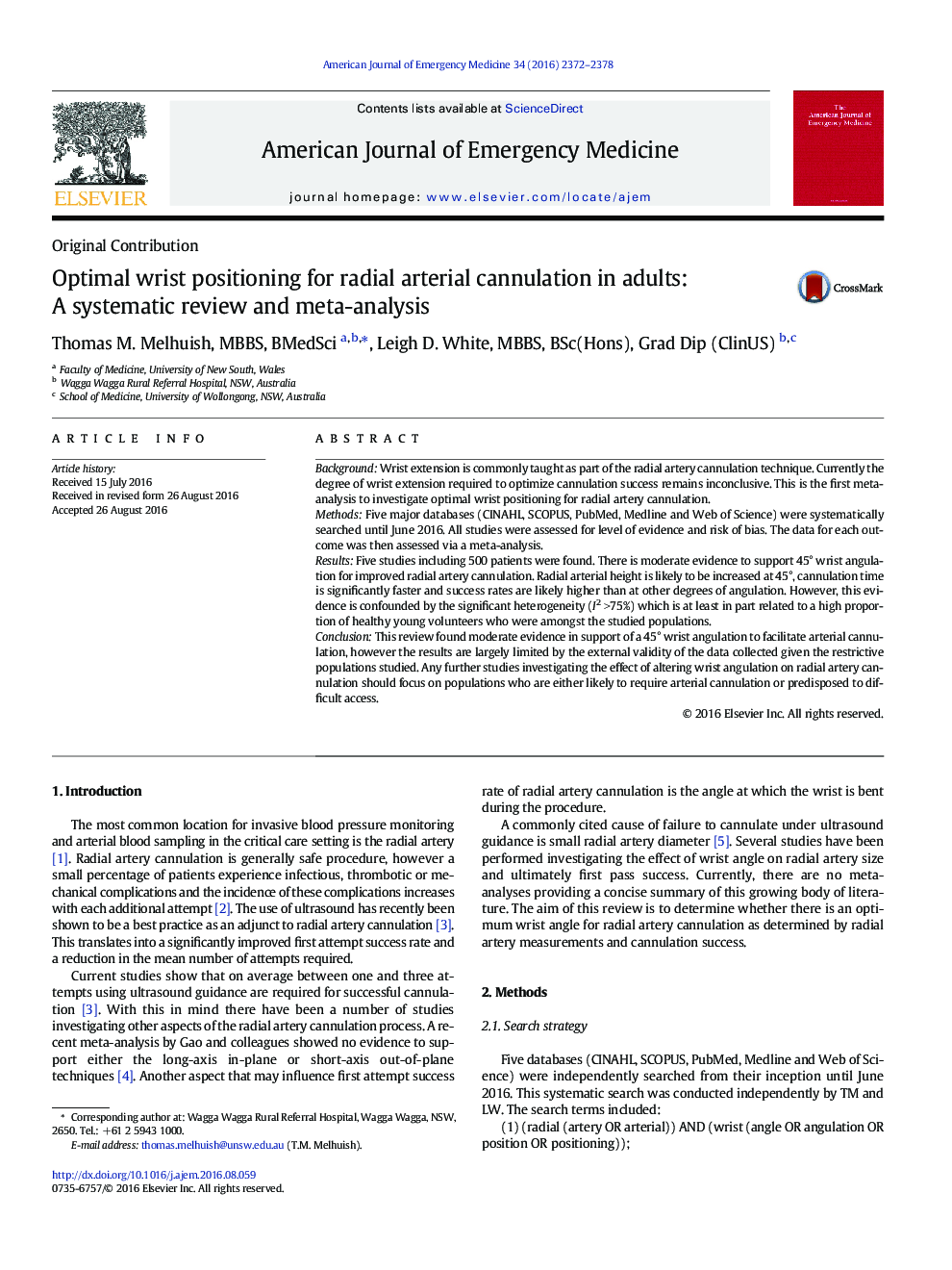| Article ID | Journal | Published Year | Pages | File Type |
|---|---|---|---|---|
| 5651228 | The American Journal of Emergency Medicine | 2016 | 7 Pages |
BackgroundWrist extension is commonly taught as part of the radial artery cannulation technique. Currently the degree of wrist extension required to optimize cannulation success remains inconclusive. This is the first meta-analysis to investigate optimal wrist positioning for radial artery cannulation.MethodsFive major databases (CINAHL, SCOPUS, PubMed, Medline and Web of Science) were systematically searched until June 2016. All studies were assessed for level of evidence and risk of bias. The data for each outcome was then assessed via a meta-analysis.ResultsFive studies including 500 patients were found. There is moderate evidence to support 45° wrist angulation for improved radial artery cannulation. Radial arterial height is likely to be increased at 45°, cannulation time is significantly faster and success rates are likely higher than at other degrees of angulation. However, this evidence is confounded by the significant heterogeneity (I2 >75%) which is at least in part related to a high proportion of healthy young volunteers who were amongst the studied populations.ConclusionThis review found moderate evidence in support of a 45° wrist angulation to facilitate arterial cannulation, however the results are largely limited by the external validity of the data collected given the restrictive populations studied. Any further studies investigating the effect of altering wrist angulation on radial artery cannulation should focus on populations who are either likely to require arterial cannulation or predisposed to difficult access.
